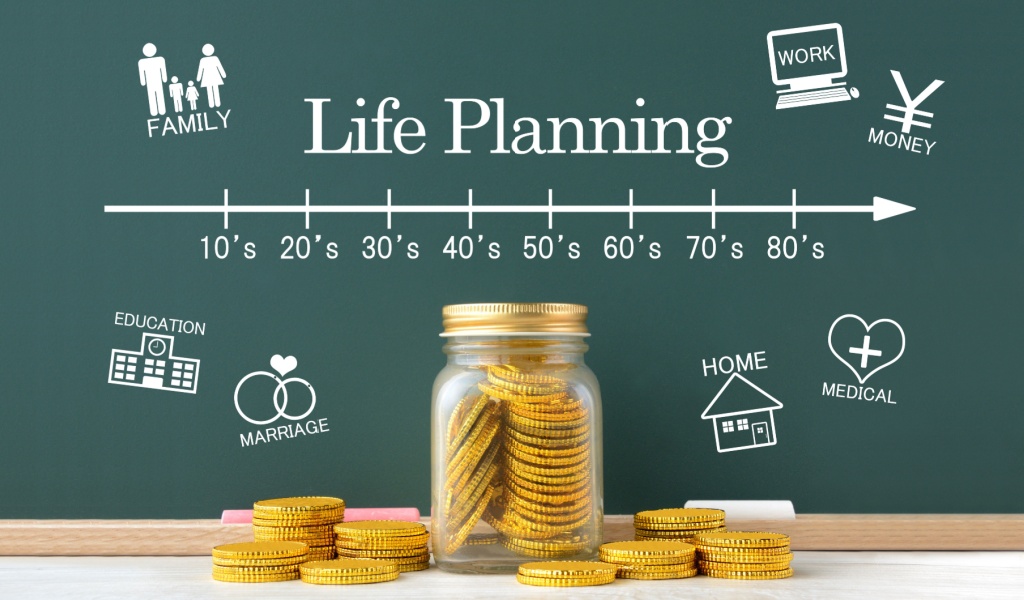Whether you’re a budgeting newbie or a number-crushing pro, you have to admit that the years 2020 and 2021 have been unprecedented – which means that any well-laid budgeting plan based on common “rules” is likely to fail due to the current situation of the world.
The pandemic in 2020 seemingly came out of nowhere and blindsided us, so people found themselves scrambling to get a hold of their financial situation. But it’s a year later and we have somewhat of an idea of the impact it has had on our economy and personal finance, so it’s time to draw up a new budget (or adjust your old one) based on what the past year has taught us.
How do you do that? Here’s what budgeting experts are saying!

Be Realistic
Whether it’s the new year or halfway through, people tend to get excited when starting a budget – which means they end up setting unrealistic expectations on themselves. Kumiko Lova, aka The Budget Mom, stresses the importance of this.
“Don’t just create a budget ― create a realistic budget,” she said. “Your budget should be created based on what you are actually spending, not what you want to spend.”
Set Clear Goals
It’s important to know where you stand financially at this current moment in time and then identify your (realistic) goals of where you want to be, say, a year in the future. Kumiko Love says that you should lay clear foundations and goals so you know where you want to go and figure out how to get there.
“By doing this, you will set yourself up to succeed in the beginning,” she said.
Switch Up Your Method
There are numerous methods of budgeting out there and what works for one person may not work for another. “If you have tried a certain budgeting method in the past and failed, that does not mean you are a failure,” Love said. “It means your process failed you.”
In 2021, try out a new budgeting method. Love herself is a fan of the paycheck budget, which revolves around budgeting according to when you get paid instead of the entire month.
Calculate Your Monthly Income
As always, the first step of budgeting is to tally up all your sources of monthly income. During such a pandemic, this may include a few new things like unemployment benefits, stimulus payments, business grants, and other relief.
“Many households experienced a fluctuation of their monthly income during the pandemic, due to stimulus payments and/or layoffs,” said Lauren Maxwell, assistant vice president at Trustco Bank.
However, Maxwell also warns that you need to be aware of the fact that some of these income streams may dry up towards the end of the year, which may cause further income fluctuations.
Identify Essential Expenses
The next step to creating a budget is to identify your essential expenses and calculate how much you spend on things like food, housing, health care, transportation, etc. Depending on your lifestyle, this may also include things like debt payments and childcare. While some of these expenses can be cut down, they cannot be eliminated from your budget entirely.
According to Lauren Maxwell, the pandemic has changed the definition of essential. For instance, you may have deferred on your mortgage or student loan – well, it’s time to pay the piper now. If you accessed your emergency fund or paused your 401(k) contributions, you’ll need to free up some cash to make up the slack.
Recognize New Spending Patterns
Once you’ve identified how much you spend on needs and eliminate that from your budget, it’s time to calculate the “wants”.
“For many of us, our spending completely changed as a result of the pandemic, so it’s helpful to first check on our new spending patterns,” said Kimberly Palmer, personal finance expert at NerdWallet.
The part of spending that has probably been impacted the most is discretionary spending such as travel and eating out. These may however have been replaced by other expenses such as spending more on groceries or streaming services. Identify how and what has changed in your spending over the past year and adjust your budget accordingly.
Plan for Big-Ticket Expenses
There are certain expenses that only come along once in a while, and they may end up taking a larger chunk of your budget than usual. While it’s not always easy to pre-identify such expenses, there are certain things that you may be anticipating. The best course of action would be to plan for those in advance so that you don’t end up facing a failed budget. You may also consider a sinking fund to help you stay organized.
“Taking a few minutes to sort out any bigger purchases you anticipate … can help you set a realistic budget,” said Colleen McCreary, chief people officer and financial advocate for Credit Karma.
Follow The 50/20/30 Rule
Your budget shouldn’t be too elaborate and too precise that you’re basically setting yourself up for failure! Spending is never that consistent, so you’ll only end up being frustrated when you can’t follow that very detailed budget you spent too much time on.
Lauren Anastasio is a certified financial planner at SoFi. “I often find clients struggle with staying on top of their budget because what they’ve created is too time-consuming,” she says.
Furthermore, she recommends the 50/30/20 rule of budgeting to her clients to help them stay on track. In this method, 50% of your monthly income would go towards fixed expenses and essentials, 30% towards discretionary spending, and 20% would be put in savings.
Automate, Automate, Automate
Paying bills is no fun, which is why when you do it month after month, you may be tempted to spend some of that money on something else – especially when you have a pretty tight budget. Tiffany Aliche, better known as The Budgetnista, says that you should remove the “human” element from the process to prevent this from happening.
“Automate these as much as you can: payments, bills, saving, investing, even giving to charity,” says Aliche, “You’re more likely to stick to your budget when there’s a system in place.”

Don’t Put All Your Money in One Place
If all your money is in the same bank account, it can be difficult to maintain a buffer and separate the funds meant for spending on essentials and saving too. That’s why Aliche says the best practice is to open a checking account to hold the portion of your budget meant for paying bills.
“Separating your funds will help you to avoid accidentally spending money designated for bills,” she said. Aliche also recommends having a separate account or savings, and even sub-accounts to save for different goals!
Set Smaller Short Term Goals
When it comes to achieving financial freedom, it’s important to look at smaller short-term micro-goals first instead of becoming overwhelmed by the seemingly mammoth task.
That’s why Colleen McCreary, chief people officer and financial advocate for Credit Karma says that “Setting a micro goal may make it easier for you to structure your budget.”
Smaller financial goals may include simple things like adding $25 to your minimum payment or adding to your monthly savings. You could also commit to taking up part-time or freelance work so you can meet these extra expenses.
“You may be pleasantly surprised at how your relationship with your money changes once you’re working toward something that seems more attainable,” she said.
Track Your Progress
Creating a budget isn’t a one-and-done thing; you need to constantly monitor and maintain the budget to ensure that you are able to follow it. If needed, you should make adjustments. You can do this the old-fashioned way with a trusty notebook and pen, or you can make use of one of the plethoras of budgeting apps that are available on your smartphone!
“Make sure you’re regularly keeping track somewhere, so when you’re ready to check in on yourself, you have a physical track record of your progress to help you hold yourself accountable,” McCreary said.



